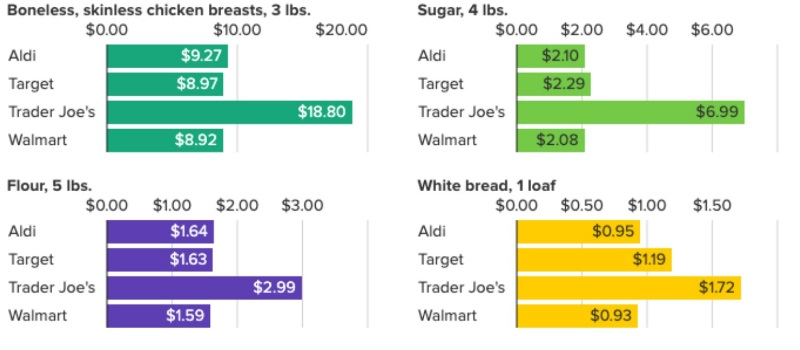<iframe style="width:120px;height:240px;" marginwidth="0" marginheight="0" scrolling="no" frameborder="0" src="//ws-na.amazon-adsystem.com/widgets/q?ServiceVersion=20070822&OneJS=1&Operation=GetAdHtml&MarketPlace=US&source=ss&ref=as_ss_li_til&ad_type=product_link&tracking_id=peaceinvesting-20&language=en_US&marketplace=amazon®ion=US&placement=0060555661&asins=0060555661&linkId=80f8e3b229e4b6fdde8abb238ddd5f6e&show_border=true&link_opens_in_new_window=true"></iframe>|<iframe style="width:120px;height:240px;" marginwidth="0" marginheight="0" scrolling="no" frameborder="0" src="//ws-na.amazon-adsystem.com/widgets/q?ServiceVersion=20070822&OneJS=1&Operation=GetAdHtml&MarketPlace=US&source=ss&ref=as_ss_li_til&ad_type=product_link&tracking_id=peaceinvesting-20&language=en_US&marketplace=amazon®ion=US&placement=1119404509&asins=1119404509&linkId=0beba130446bb217ea2d9cfdcf3b846b&show_border=true&link_opens_in_new_window=true"></iframe>|<iframe style="width:120px;height:240px;" marginwidth="0" marginheight="0" scrolling="no" frameborder="0" src="//ws-na.amazon-adsystem.com/widgets/q?ServiceVersion=20070822&OneJS=1&Operation=GetAdHtml&MarketPlace=US&source=ss&ref=as_ss_li_til&ad_type=product_link&tracking_id=peaceinvesting-20&language=en_US&marketplace=amazon®ion=US&placement=1119376629&asins=1119376629&linkId=2f1e6ff64e783437104d091faaedfec7&show_border=true&link_opens_in_new_window=true"></iframe>

By Dr. Disha Spath, WCI Ambassador
How can you spend $1,000 per month on groceries for a family of four?!?! That is a sentiment I have often heard, especially when I share my budget from when I was going gazelle speed in paying off my medical student loan debt. It might seem like such a small amount to many high earners. But during much of my upbringing, I was raised by a single mom on a teacher’s salary (roughly $3,000 per month at that time), so, relatively speaking, $1,000 per month on groceries seems like living a very comfortable life to me.
Even though I’ve gone from broke to financially fit quickly, I still live in a high-cost-of-living (HCOL) area in upstate New York, and I have a family with two kids and large dogs. I LOVE food and value organic groceries so trying to feed my family well while maintaining a strict grocery budget has put the skills I learned as a child to good use. While every family’s need is different and you certainly don’t have to spend what I spend to be financially fit, here are a few tips that might be useful if you’re trying to cut grocery costs.
#1 Arbitrage Where You Shop Carefully
I know we’re all busy, but price-optimizing the things we buy most often can really pay off. While there is variability in the prices of specific grocery items at different stores, certain stores cost more overall than others. In general, Walmart and Aldi are usually the lowest-cost providers of non-bulk nonperishables. Aldi saves costs on personnel by incentivizing customers to return their own carts (25 cents is a solid psychological motivator apparently!), by using display-ready boxes to stock shelves, and by using locally sourced produce.
Acorns did an interesting study in 2022 where it compared the costs of grocery staples at grocery stores around the country. It concluded that while there was variability in individual item costs, total grocery costs at most suburban grocery stores across the country were consistent. Walmart, Aldi, and Target had similar pricing on staples, but Trader Joe’s really took the cake for expensive groceries. Boneless chicken breasts were $18.80 at TJ’s vs. $9.27 at Aldi’s. Prices at Whole Foods are similarly 10%-20% higher than other stores.
Choose what you buy where carefully. I’m not saying to never go to TJ’s or Whole Foods (lord knows I love my vegan tikka masala and expensive cheese). I’m saying utilize them as specialty stores for certain specialty items and do your grocery staple shopping elsewhere, so you can have 18-month aged gouda and still stick to your budget.
Check out this graphic, via Acorns.

#2 Consider Going Local for Produce and Perishables
Shipping costs for these items can really inflate their costs. If you can find items at a nearby farmers market or farm share, you can often save money as compared to the big box stores. I’m lucky to have many farms around that do farm shares. We support the farm at the beginning of the season and then benefit from their fresh produce during the season. They even offer a discount for volunteering to help at the farm, and that brings my cost to $28.40 per week for a LARGE box of organic veggies. Growing your own food in a garden is another option and makes produce essentially free, though there is more time investment.
Milk and eggs are big-ticket staple items that have taken a huge inflation hit recently. Look around to see if there are any local farms you can support. We save some money (about a dollar per half-gallon) by having a local farm deliver fresh grass-fed milk, eggs, and cream to us weekly—yes, we have a milkman! This is variable by region obviously, but it doesn’t hurt to look. If all else fails, try services like Misfits Market that try to reduce food waste by offering slightly imperfect produce for a discount. Also, look for local meats. Our local butcher is packed on Wednesdays. That’s because that’s the day they have amazing sales on fresh, local meat. Admittedly, I live in a relative food oasis here in upstate New York, but give your local butcher or seafood store a chance. You might find some real value there.
More information here:
Finding All the Right Ingredients
#3 Eat In-Season Produce
As mentioned above, shipping costs can inflate food pricing. Eating in season and not paying for shipped produce from different corners of the world can keep costs and our carbon footprints small. Also, choosing to eat more veggies and less meats can lower overall costs.
#4 Consider Bulk Buying
If you have storage space available, consider buying staple nonperishables in bulk from stores like Sam's and Costco, which often offer much lower price per unit than other stores in exchange for buying in bulk. Alternatively, stock up when things go on sale at your normal grocery store.
More information here:
10 Frugal Hacks to Automatically Save Money for Busy Professionals
#5 Consider Couponing and Credit Card Offers
I don’t have much time to track coupons, but I do keep my eyes open for credit card cash-back offers for certain stores where I shop. For example, American Express recently had a cash-back offer at Walmart. It wasn’t much effort to change my payment method at checkout to my Amex to take advantage of this. Some people really make out well by stacking deals like this with local grocery coupons and manufacturer coupons. If that’s your jam, go on with your bad self.
#6 Shop Online and Watch Delivery Costs
The advent of online grocery shopping and delivery services has been such a godsend for busy households. Shopping for groceries from home helps streamline costs because it gives us the chance to look in our cupboard and see if we really need something that we are ordering. Also, it saves a ton of time that we could otherwise spend in a more enjoyable way than walking between the aisles looking for one elusive item. But watch those delivery fees. Often, delivery fee + tip can raise the total by $10 or more. These fees can be avoided by doing pickup at the store, which is generally free and still results in plenty of time saved.

#7 Shop at Ethnic Stores
It’s amazing to me how much box stores charge for spices like cumin and turmeric. The markup for “international” or “gourmet” spices is incredible at neighborhood grocery stores. Go to your local ethnic store instead, and you’ll likely find much better prices per unit. Plus, these stores usually have well-priced produce and meats available.
#8 Look for Deals on Alcohol
It is possible to save a lot of money by knowing where to shop for wine, beer, and liquor. Where alcohol is sold and the laws regarding this are very state dependent. Look for a wholesaler in your neighborhood and compare prices carefully, because there are a lot of variabilities here. I’ve really enjoyed stacking Macy’s wine store coupons with cash-back offers on credit cards to get nice wines for $10 per bottle recently.
More information here:
Real Life Examples of Physician Budgets — From the Frugal to the Extravagant
#9 Batch Cook and Make Things from Scratch
Once a week, I try to make a big pot of something that can be individually packaged to be used for meals throughout the week. This makes life so much easier and lowers overall food costs by reducing money spent at restaurants. Making food at home is obviously a lot cheaper than buying it. And you can make a lot more from scratch than you think. I recently discovered how easy it is to make colored sugar for sugar cookies at home (seriously, just shake a cup of sugar with a few drops of food coloring). I can’t believe I have been spending $6 on three ounces of Wilton colored sugar every holiday season. The equivalent amount of homemade colored sugar would cost about 10 cents. I try to make as much as I can from the bulk ingredients that I have instead of buying pre-packaged boxes. It’s a lot cheaper and a lot healthier.
#10 Shop When You’re Not Hungry
Finally, a word to the wise, don’t go to the grocery store after a workout . . . especially not Trader Joe’s. Get some food first. The hungrier you are, the more the beautiful displays will result in impulse shopping. I speak from experience (see my freezer full of TJ’s frozen chicken tikka masala for evidence).
Before implementing these grocery hacks, I was spending more than $300 per grocery trip even before we had two kids. Once I really got into price-optimizing groceries, I cut that bill in half or more. There were months in our super frugal time when we only spent $600 a month on groceries. The biggest bang for the buck was switching from Price Chopper to Aldi. Over time, our costs have crept up a little as we switched to pickup from Walmart and added milk delivery and others, but we still keep our groceries somewhere around the $1,000 per month mark on average. If we didn’t use some of these tips, we could easily spend $2,000 per month on groceries. While it does require some upfront work, these changes soon become automatic. Plus, the time saved with online ordering makes up for the time spent optimizing costs. Once the routine is established, it’s an easy $1,000 per month savings that can add up to some real wealth-building power over a working career.
So, shop smart for nonperishables, try to shop local for perishables, and also help reduce your carbon footprint. What’s not to love?
What's your monthly grocery bill? Would you consider implementing these tips? Do you have your own money-saving tips to share? Comment below!
The post 10 Ways That Even Physicians Can Save Money on Groceries appeared first on The White Coat Investor - Investing & Personal Finance for Doctors.
||
----------------------------
By: Josh Katzowitz
Title: 10 Ways That Even Physicians Can Save Money on Groceries
Sourced From: www.whitecoatinvestor.com/10-ways-to-save-money-on-groceries/
Published Date: Sat, 04 Feb 2023 07:30:29 +0000
Read More
Did you miss our previous article...
https://peaceofmindinvesting.com/investing/functional-longevity-retirement-is-useless-if-you-cant-move-and-think
.png) InvestingStocksToolsClubsVideosPrivacy PolicyTerms And Conditions
InvestingStocksToolsClubsVideosPrivacy PolicyTerms And Conditions
